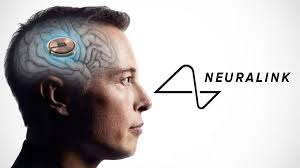Imagine a world where thoughts directly control technology. No more typing, swiping, or even speaking. Neuralink, a neurotechnology company founded by Elon Musk, aims to make this science fiction a reality by implanting brain-computer interfaces (BCIs) directly into the human brain. This futuristic technology has the potential to revolutionize how we interact with the world, but also raises serious ethical and safety concerns.
What is Neuralink?
Neuralink is a pioneering company focusing on developing BCIs. These interfaces are essentially devices that can read electrical signals in the brain and translate them into computer commands. The company’s current design involves a tiny chip, about the size of a coin, which is surgically implanted into the brain. Hundreds of ultra-thin threads, called electrodes, then reach out and connect to individual neurons. These electrodes record the firing of neurons, capturing the brain’s electrical activity.
The collected data is then transmitted wirelessly to a receiver outside the head. By deciphering these neural signals, Neuralink hopes to allow users to control external devices, like computers or prosthetic limbs, simply by thinking about it.
Objectives of Neuralink: Merging Mind and Machine
Neuralink’s primary objective is to create a seamless connection between the human brain and computers. This technology has the potential to benefit people in various ways:
- Restoring Lost Function: For individuals with paralysis or neurological conditions like Parkinson’s disease, Neuralink’s BCIs could offer the ability to regain movement, communication, and independence. Imagine someone with spinal cord injury controlling a robotic limb just by thinking about moving their arm.
- Enhanced Human Capabilities: Neuralink envisions a future where BCIs can augment human abilities. Imagine directly streaming information to your brain or enhancing memory and focus.
- Treating Neurological Disorders: BCIs could potentially help treat neurological and psychiatric disorders by directly stimulating or recording specific brain regions.
In February 2024, Neuralink announced the First chip in the human brain implantation in a human trial. While details remain scarce, this marks a significant step towards Neuralink’s ambitious goals.
Advantages of Neuralink Technology
The potential advantages of Neuralink’s technology are vast. Here are some key areas where it could have a transformative impact:
- Medical Applications: BCIs could revolutionize treatment for paralysis, stroke, ALS, and other neurological conditions. Imagine restoring sight to the blind or enabling paralyzed individuals to walk again.
- Improved Human-Computer Interaction: Imagine controlling computers, smartphones, and other devices directly with your thoughts. This could significantly enhance accessibility and efficiency in various fields.
- Cognitive Enhancement: Neuralink’s technology might hold the key to boosting memory, focus, and learning capabilities. This could have significant implications for education, scientific research, and even creative endeavors.
- However, alongside these exciting possibilities lie significant challenges and ethical concerns.
Potential Disasters of Neuralink Implants
The idea of implanting chips in the brain is bound to raise concerns. Here are some potential disasters that could arise from Neuralink technology:
- Security Risks: BCIs could be vulnerable to hacking, potentially allowing unauthorized access to a person’s thoughts and memories. Imagine someone hijacking your brain implant to steal sensitive information or manipulate your actions.
- Privacy Concerns: The ability to read brain activity raises serious privacy issues. Who has access to the data collected by BCIs? Could it be used for commercial purposes or even government surveillance?
- Unequal Access: Neuralink technology is likely to be expensive. This could lead to a situation where only the wealthy can afford these implants, creating a new level of social and economic disparity.
- Ethical Dilemmas: Neuralink technology blurs the line between human and machine. What happens to our sense of self when our brains are directly connected to computers? Could it lead to a loss of our humanity?
The Road Ahead: Balancing Innovation with Caution
Neuralink’s technology represents a significant advancement in the field of brain-computer interfaces. The potential benefits for treating disabilities and enhancing human capabilities are undeniable. However, the ethical and safety concerns surrounding this technology cannot be ignored.
Moving forward, careful consideration and robust regulations are crucial. Open discussions involving scientists, ethicists, policymakers, and the public are essential to ensure the responsible development and implementation of Neuralink technology.
We must tread cautiously, ensuring that Neuralink becomes a tool for human progress, not a source of exploitation or dystopian nightmares. As with any powerful technology, the responsibility lies with us to ensure it serves humanity for the greater good.

